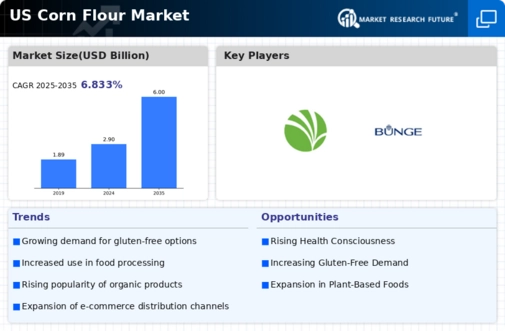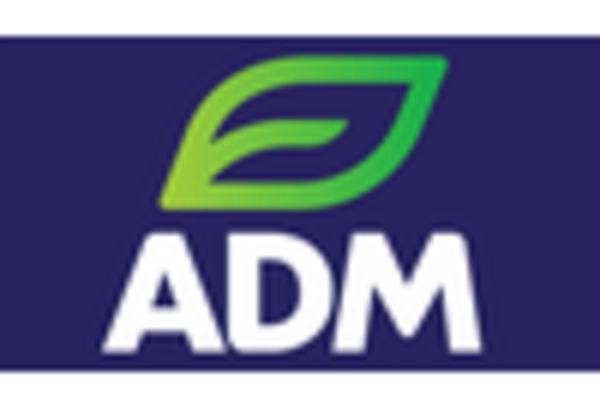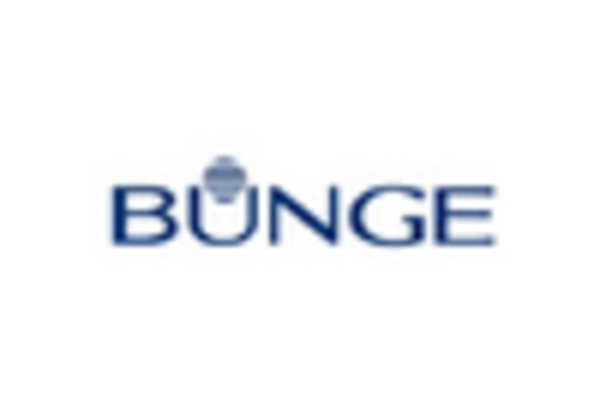The corn flour market exhibits a dynamic competitive landscape characterized by a blend of innovation, strategic partnerships, and regional expansion. Key players such as Archer Daniels Midland Company (US), Cargill, Incorporated (US), and General Mills, Inc. (US) are at the forefront, each employing distinct strategies to enhance their market presence. Archer Daniels Midland Company (US) focuses on sustainability initiatives, aiming to reduce its carbon footprint while expanding its product offerings. Cargill, Incorporated (US) emphasizes digital transformation, leveraging technology to optimize its supply chain and improve operational efficiency. General Mills, Inc. (US) is actively pursuing partnerships with local farmers to ensure a steady supply of high-quality corn, thereby enhancing its product quality and brand reputation. Collectively, these strategies contribute to a competitive environment that is increasingly driven by innovation and sustainability.
In terms of business tactics, companies are localizing manufacturing to reduce transportation costs and enhance supply chain resilience. This approach not only minimizes environmental impact but also allows for quicker response times to market demands. The competitive structure of the corn flour market appears moderately fragmented, with several key players holding substantial market shares. However, the influence of major companies is significant, as they set industry standards and drive trends that smaller players often follow.
In October 2025, Archer Daniels Midland Company (US) announced a partnership with a leading agricultural technology firm to develop advanced analytics for optimizing corn production. This strategic move is likely to enhance their operational efficiency and sustainability efforts, positioning them favorably in a market increasingly focused on environmental responsibility. The collaboration may also provide insights into crop yield improvements, which could translate into cost savings and enhanced product offerings.
In September 2025, Cargill, Incorporated (US) launched a new digital platform aimed at streamlining its supply chain processes. This initiative is expected to improve transparency and traceability in the sourcing of corn flour, aligning with growing consumer demand for accountability in food production. By integrating technology into its operations, Cargill is not only enhancing its efficiency but also reinforcing its commitment to sustainability and quality.
In August 2025, General Mills, Inc. (US) expanded its product line to include organic corn flour, responding to the increasing consumer preference for healthier and more sustainable food options. This strategic diversification is indicative of the company's commitment to meeting evolving consumer demands while also positioning itself as a leader in the organic segment of the market. The introduction of organic products may attract a new customer base, further solidifying General Mills' market position.
As of November 2025, the corn flour market is witnessing trends that emphasize digitalization, sustainability, and technological integration. Strategic alliances among key players are shaping the competitive landscape, fostering innovation and collaboration. The shift from price-based competition to a focus on technology, supply chain reliability, and product differentiation is becoming increasingly evident. Moving forward, companies that prioritize innovation and sustainability are likely to gain a competitive edge, as consumers continue to seek products that align with their values.

















Leave a Comment